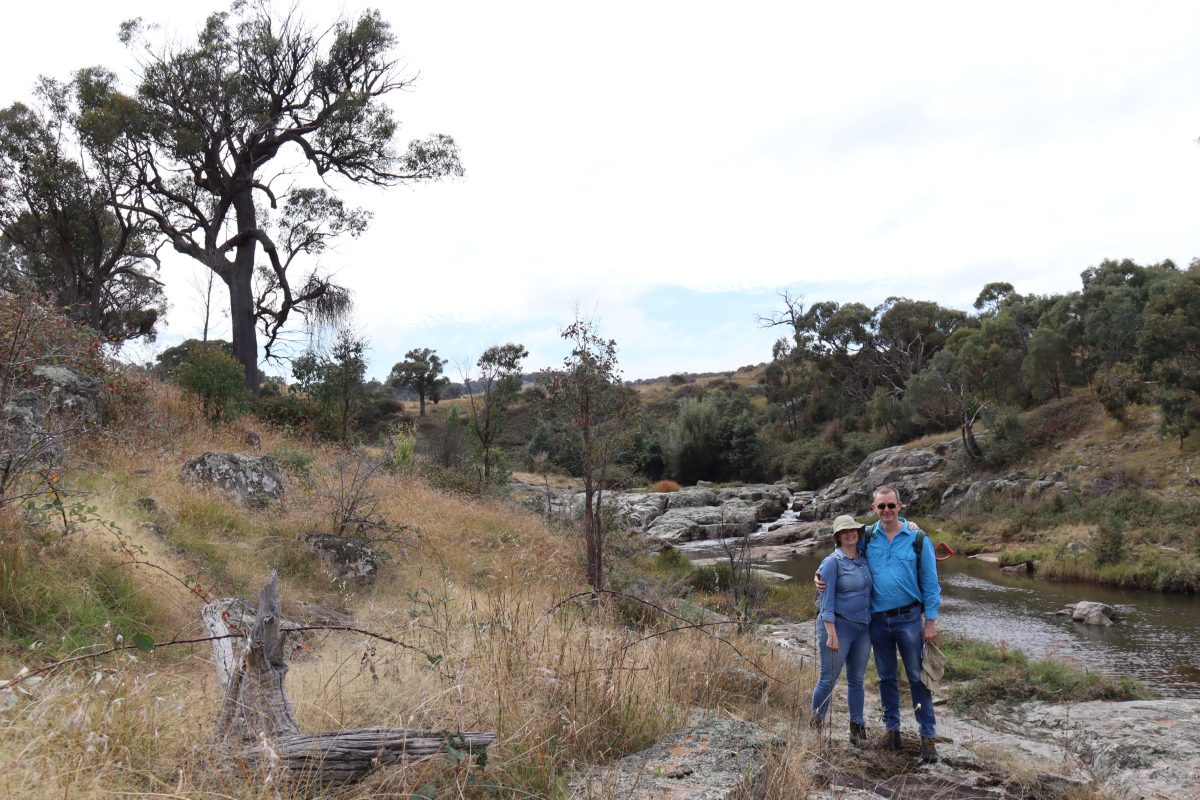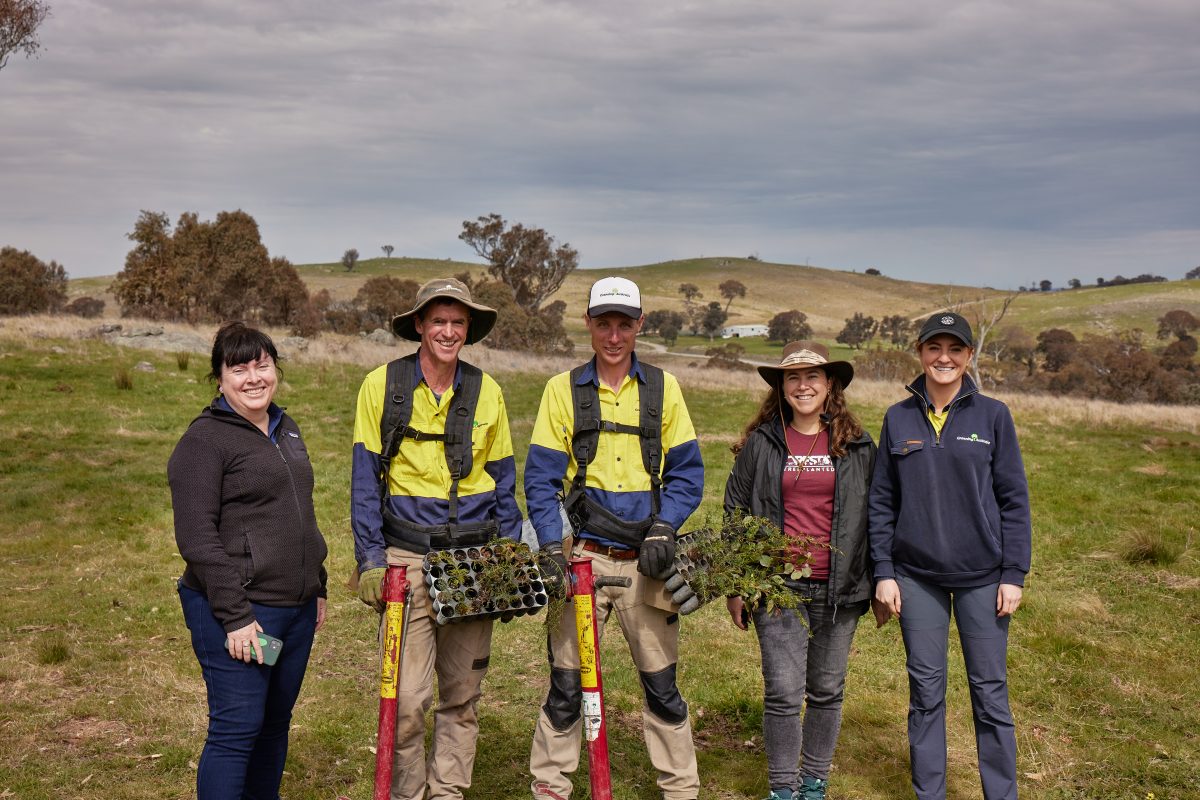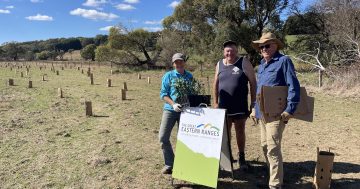
Colin Price and Emily Clarke on their Wheeo property in the NSW Southern Tablelands where they’ve planted thousands of trees. Photo: Supplied.
Lots of people talk about climate change. How we need to do something about it. How we can’t leave such a legacy to future generations. But for Canberra school teachers, Emily Clarke and Colin Price, you don’t just talk about it, you do something.
Since they bought their property at Wheeo, in the NSW Southern Tablelands last year – population 77 according to the last Census – they have set about planting trees, trees and more trees. Mr Price had got to know the Grabben Gullen Creek area and its locals since 2009 after spending many years prospecting in the region.
“When we heard that a 62-hectare block of land was possibly for sale there we made an offer,” he said.
“We have an incredible array of native wildlife on and around our property, such as wombats, echidnas, wallabies, reptiles, and over 30 native species of birds, including kookaburras, magpies, and wedge-tailed eagle,” Mr Price said.
The Wheeo plantings are part of a larger project, but one with a similar goal. It is part of the Nestle Global Reforestation Program which aims to establish 10 million trees in partnership with Greening Australia, Canopy and One Tree Planted.
“We want to use our property to inspire our local community to participate in this kind of activity. Working with Greening Australia and their partners means that you can achieve a lot more, and faster, than what you could alone,” Mr Price said.
“Planting trees has the potential to earn significant income from carbon credits, and Greening Australia are ideal partners in managing the planting program and monitoring progress,” he said.
A science teacher at Saint Francis Xavier College in Florey, and at Daramalan College, Dickson, before that, the study of environmental science has always been an interest for him.
“I spent 20 years as an exploration geologist and spent a lot of that time outdoors all over Australia, Papua New Guinea, and South America. This meant a love for working outdoors and appreciating nature.
“My partner Emily is a keen gardener and our interests coincided in wanting to return our property to grassy woodland and provide healthy habitats for native wildlife.”
Looking at the big picture, the reforestation program has its sights set on growing 200 million trees globally by 2030 and is part of its efforts to achieve net zero greenhouse gas emissions.

All hands on augers when it comes to planting at Wheeo, from left, Rachel Rolph from Nestle, Haydn Burgess and Ian Rayner from Greening Australia, Jaymee Silva from One Tree Planted and Emma Green from Greening Australia. Photo: Supplied.
The 10 million trees in Australia aim to capture an estimated 1.9 million tonnes of CO2 over a 25-year carbon crediting period. Averaged over the project lifetime, this is the equivalent of exhaust emissions from more than 22,000 cars driving each year.
A biodiverse mix of native species, the trees are expected to help restore local biodiversity, improve water quality and revitalise degraded soils at each of the planting sites.
Greening Australia Chief Operating Officer, Paul Della Libera, said partnership and collaboration were key to driving impact and change across Australian landscapes.
“To address the twin challenges of biodiversity loss and climate change we must work together, finding innovative ways to drive speed and scale. Working with partners such as Nestle allows us to undertake ambitious projects that will help to deliver real change and tangible benefits to the Australian landscape.
“These projects are not possible without the participation of private landholders. In the 40-plus years we’ve been restoring landscapes, we’ve worked with thousands of landholders, helping them to re-establish native habitat, improve the health of their land and create environmental and financial value. These relationships are essential to achieving nature restoration at scale; we couldn’t do this work without them.”
More information about the project is available on the Greening Australia website.







